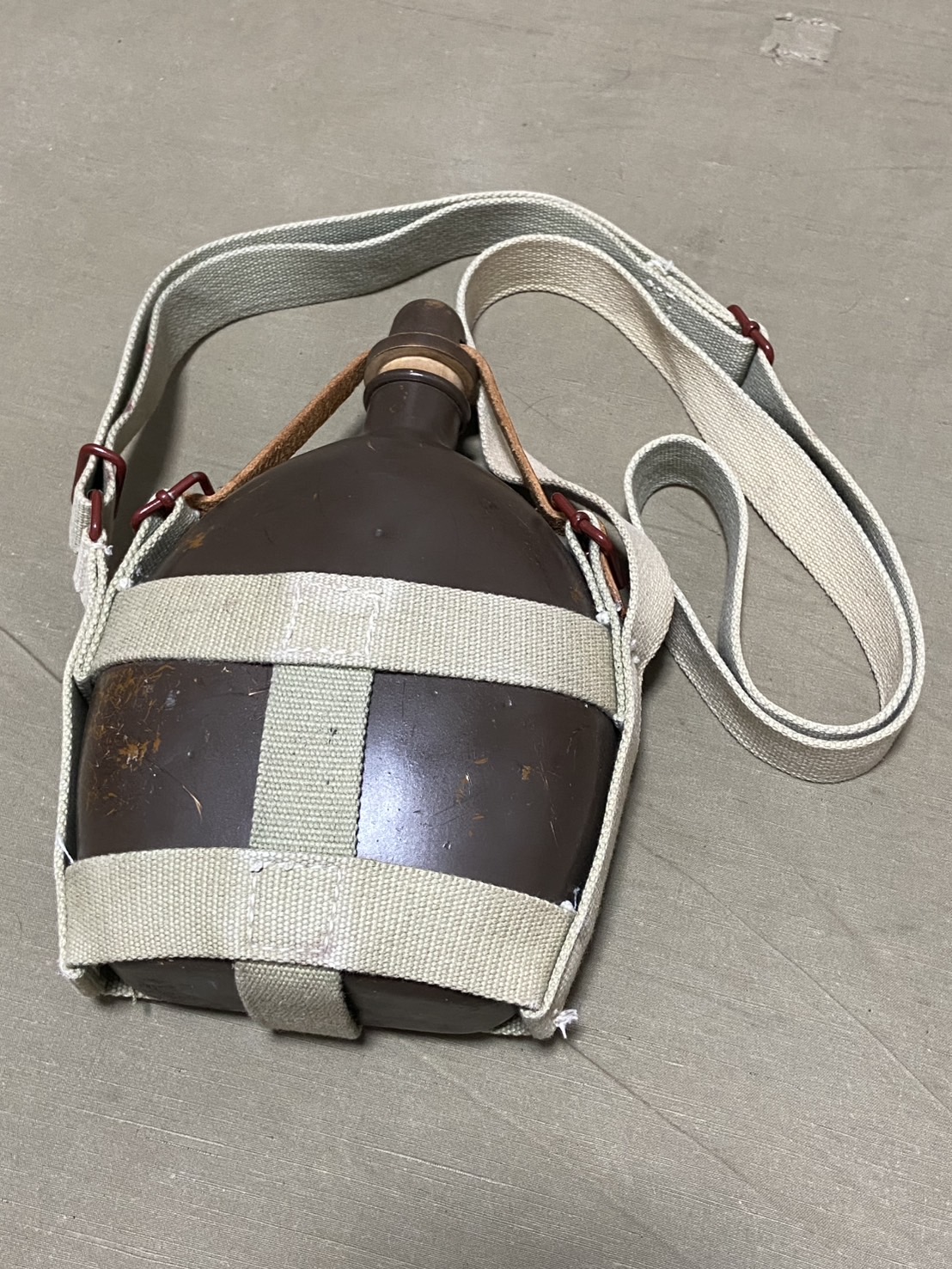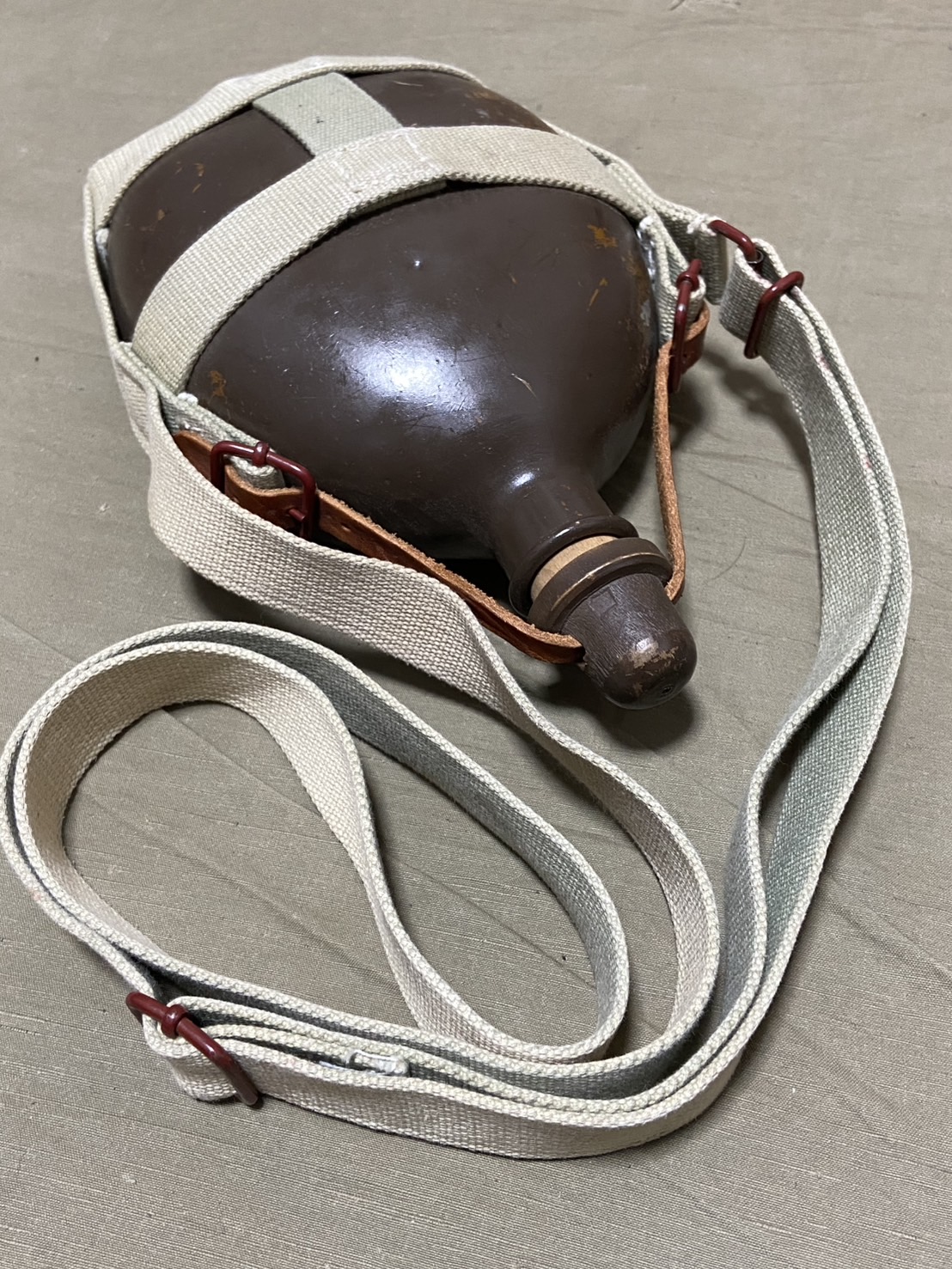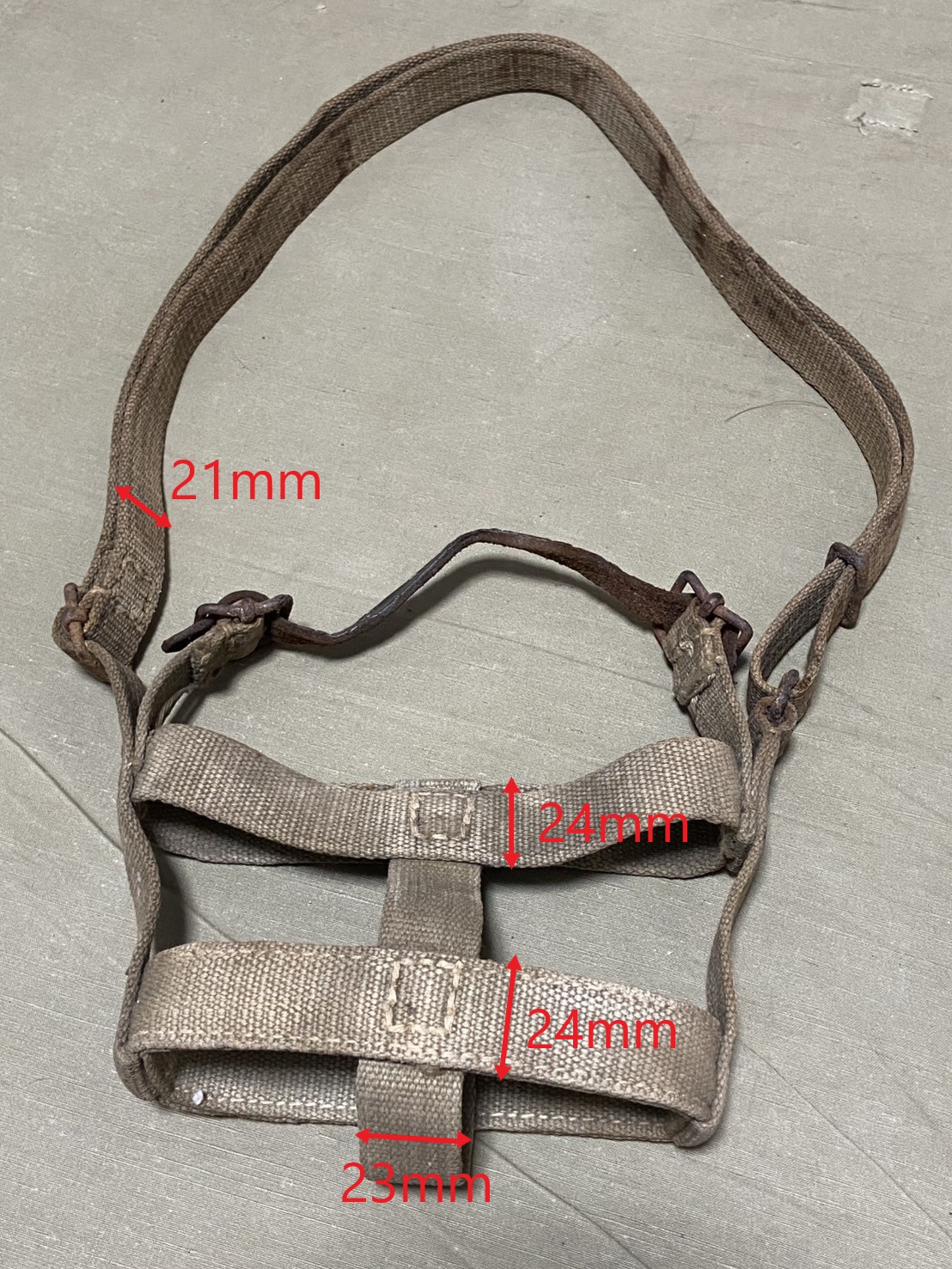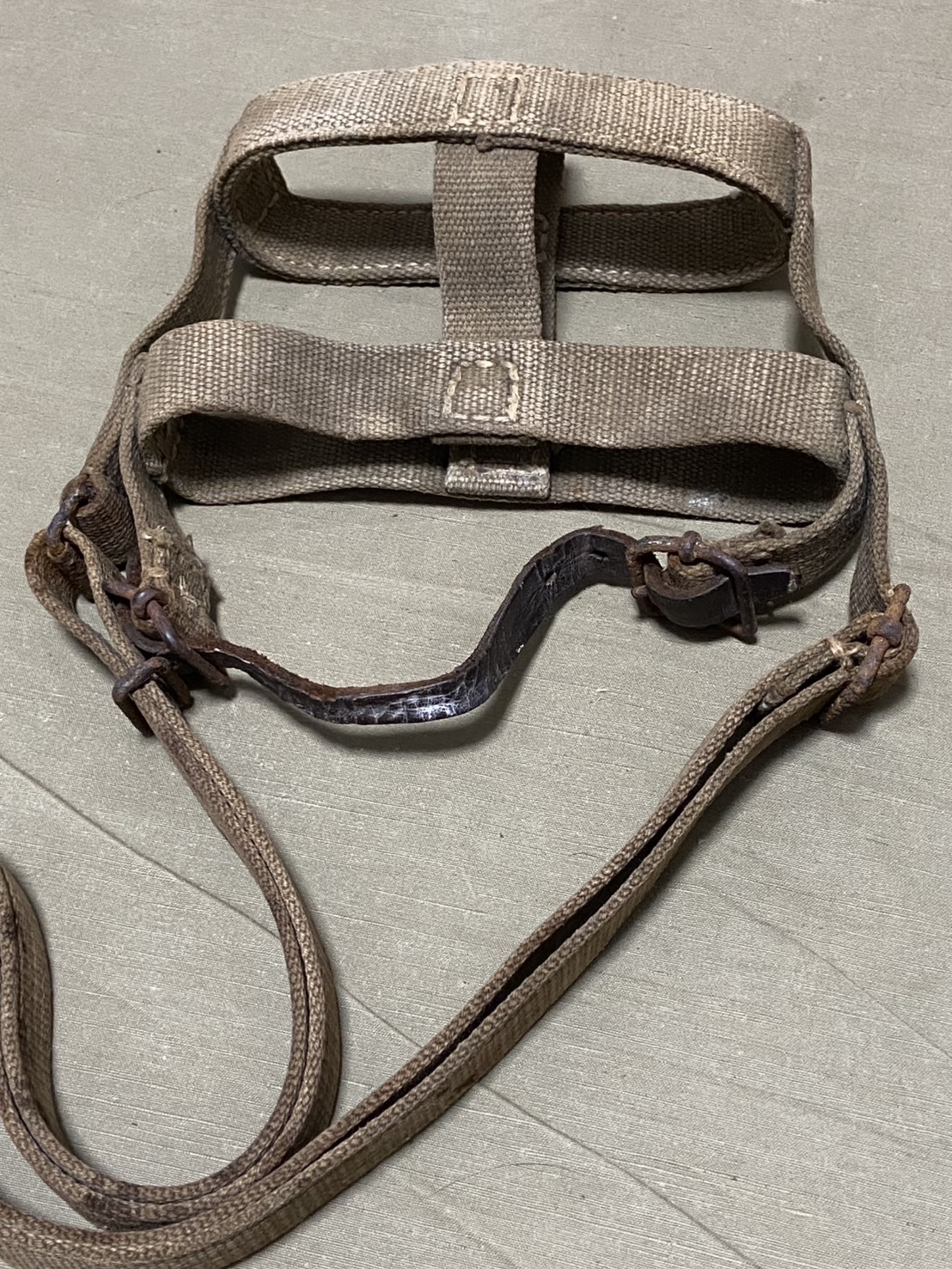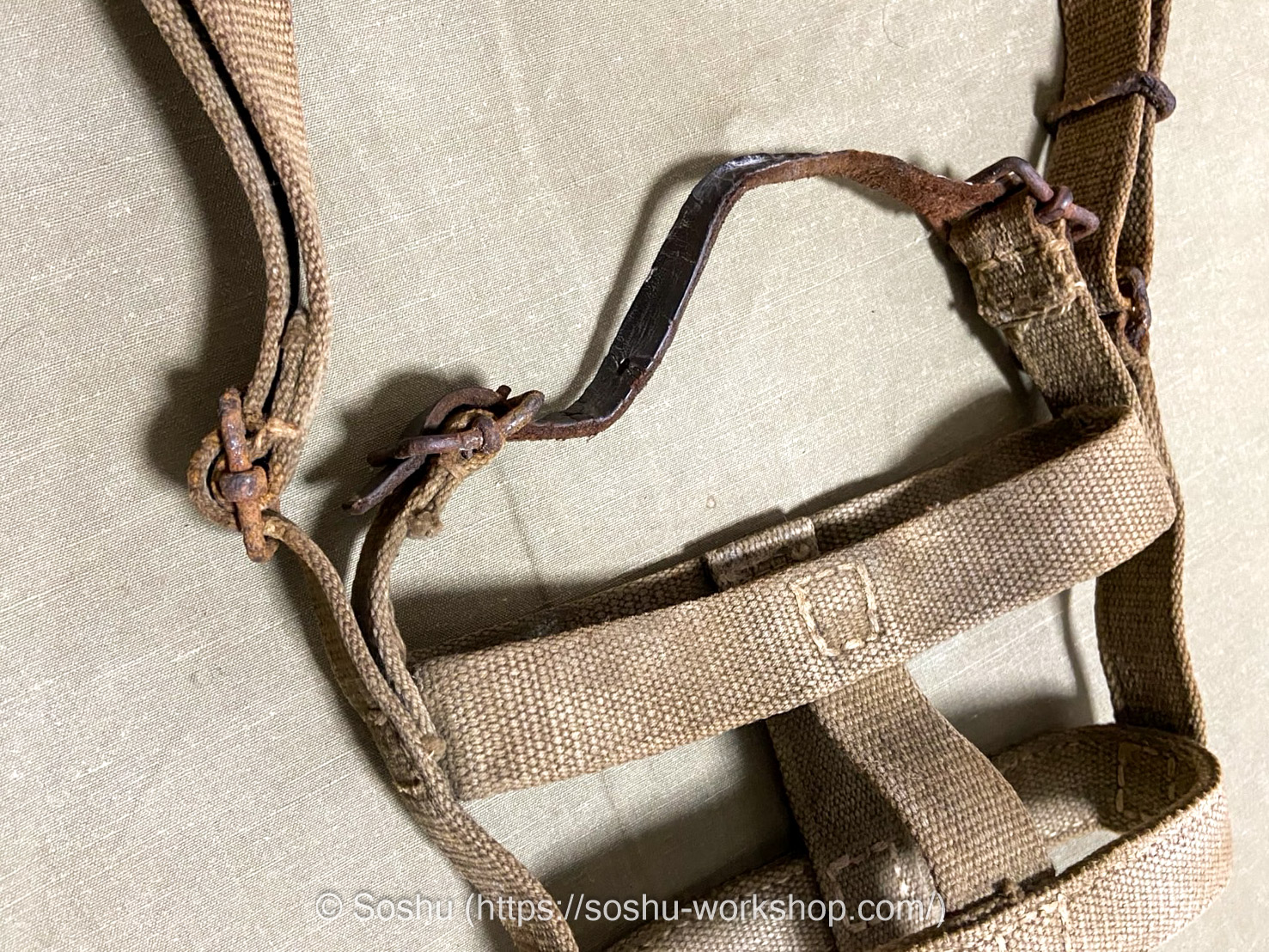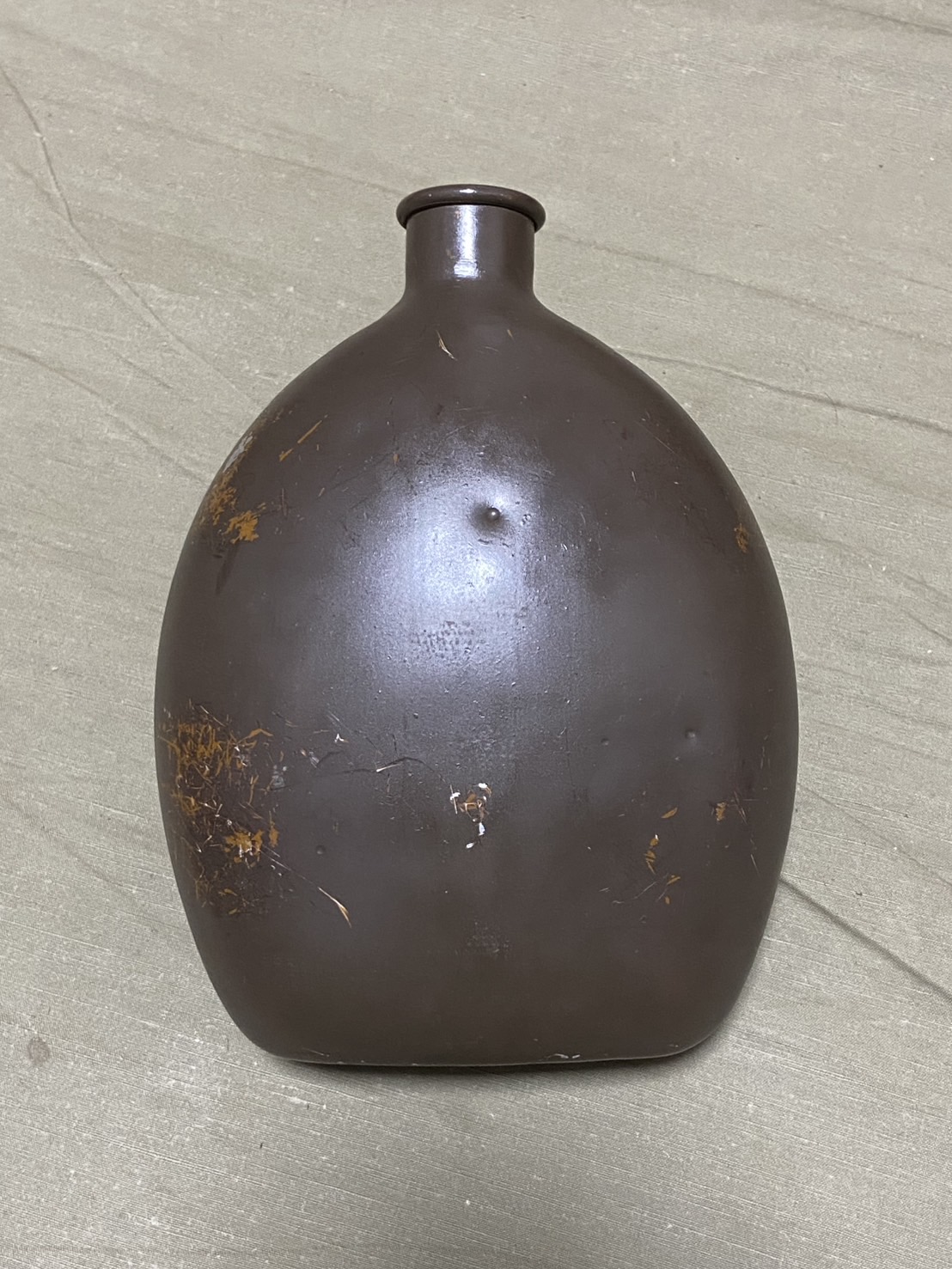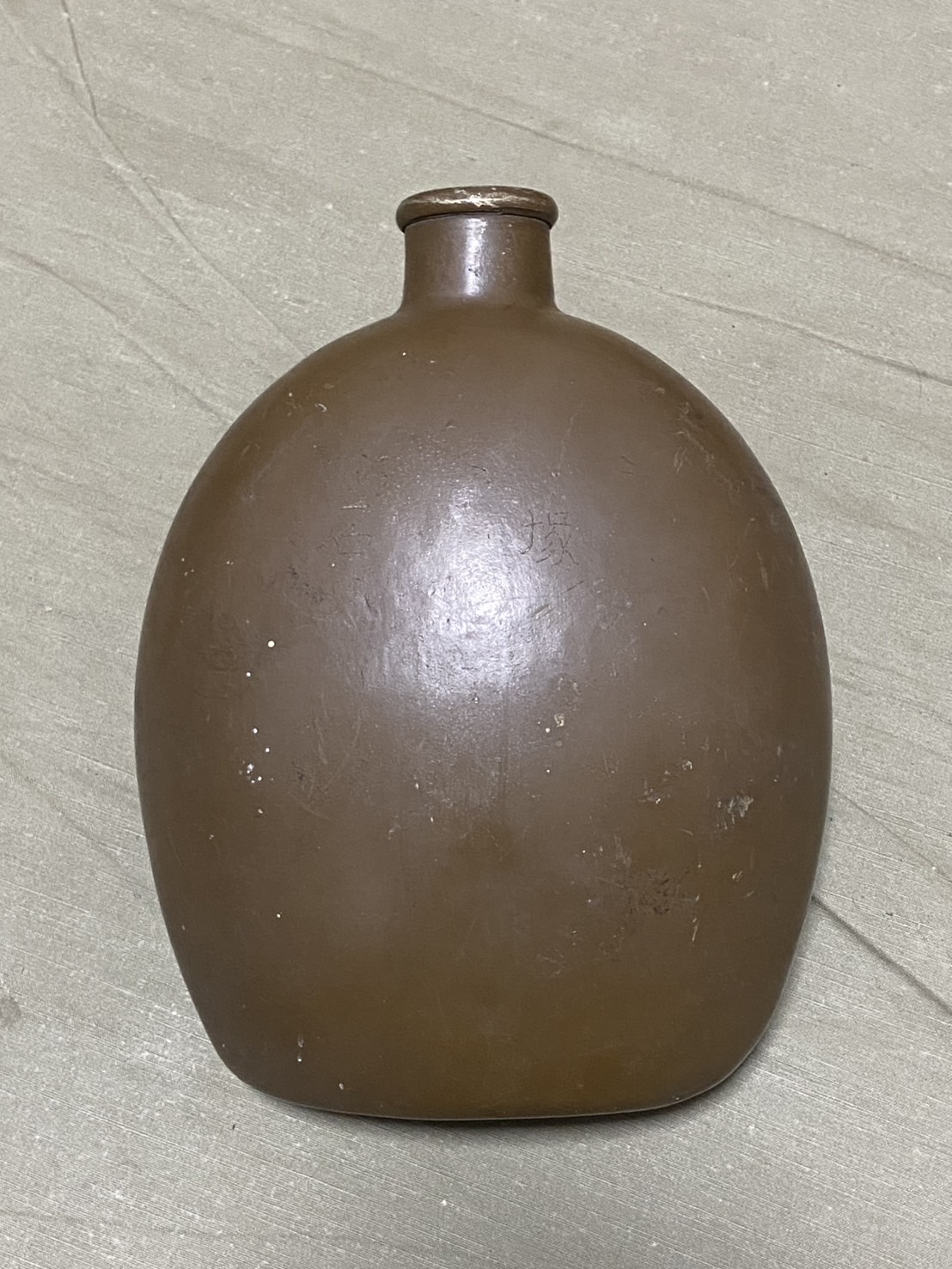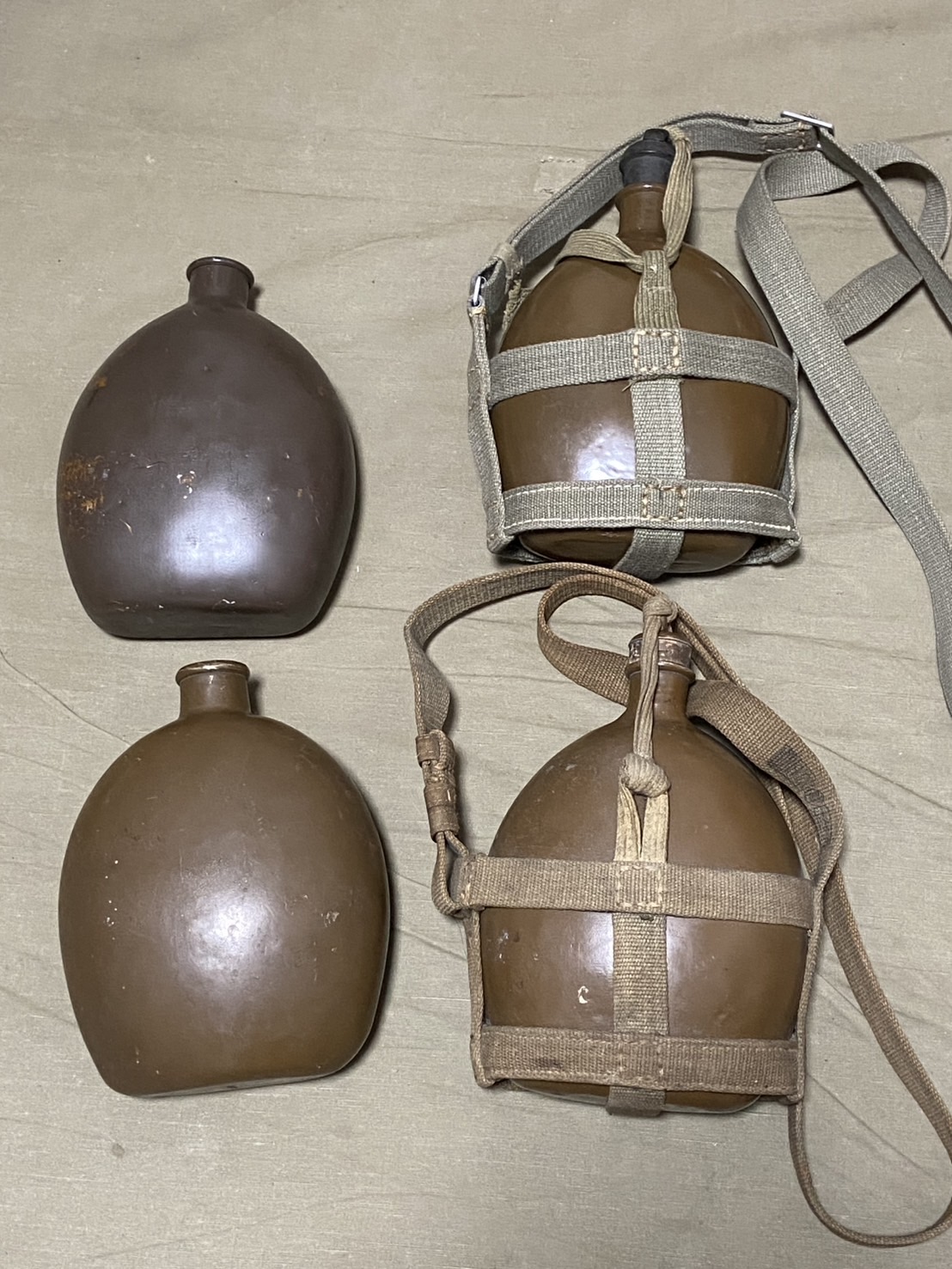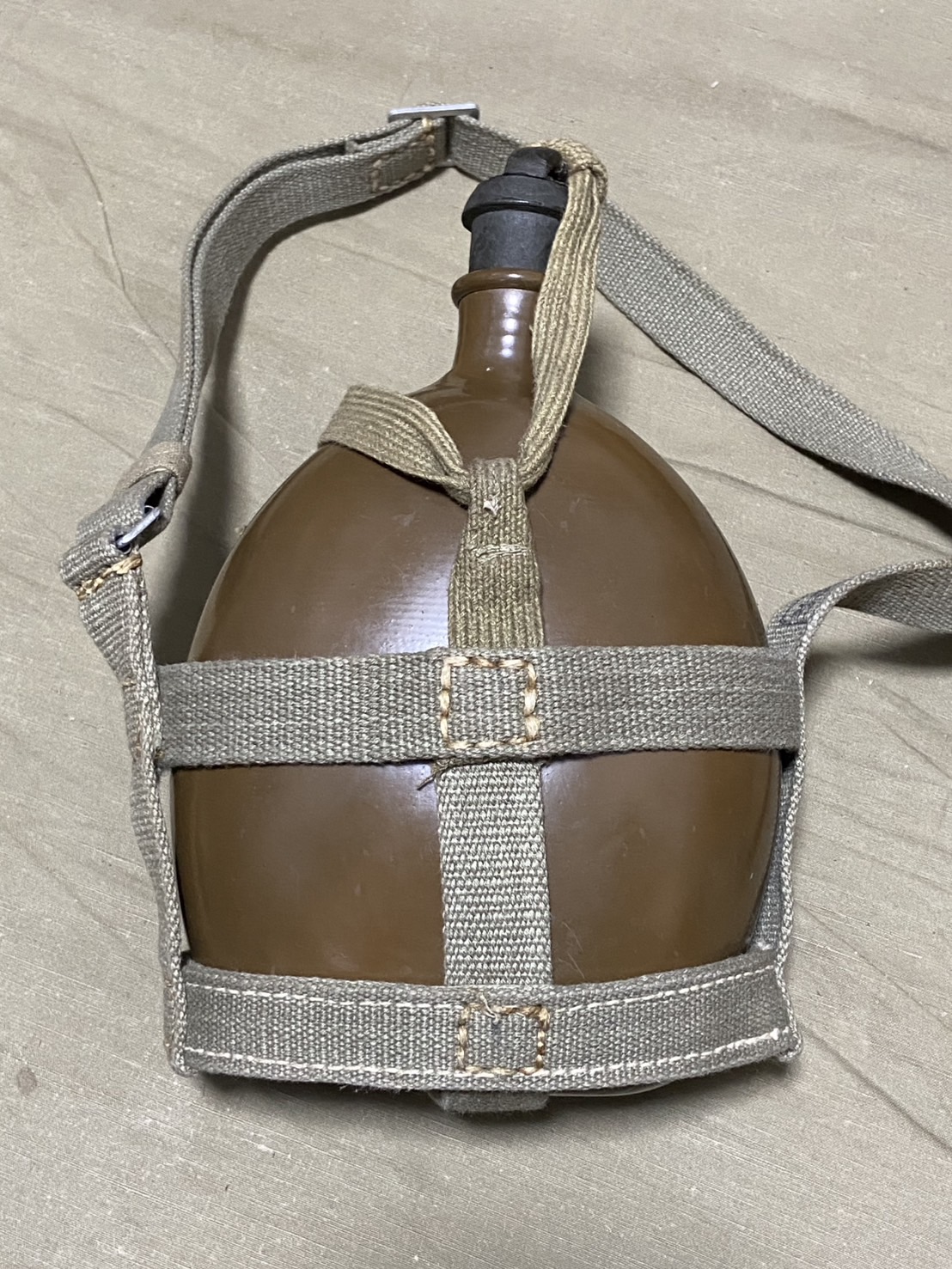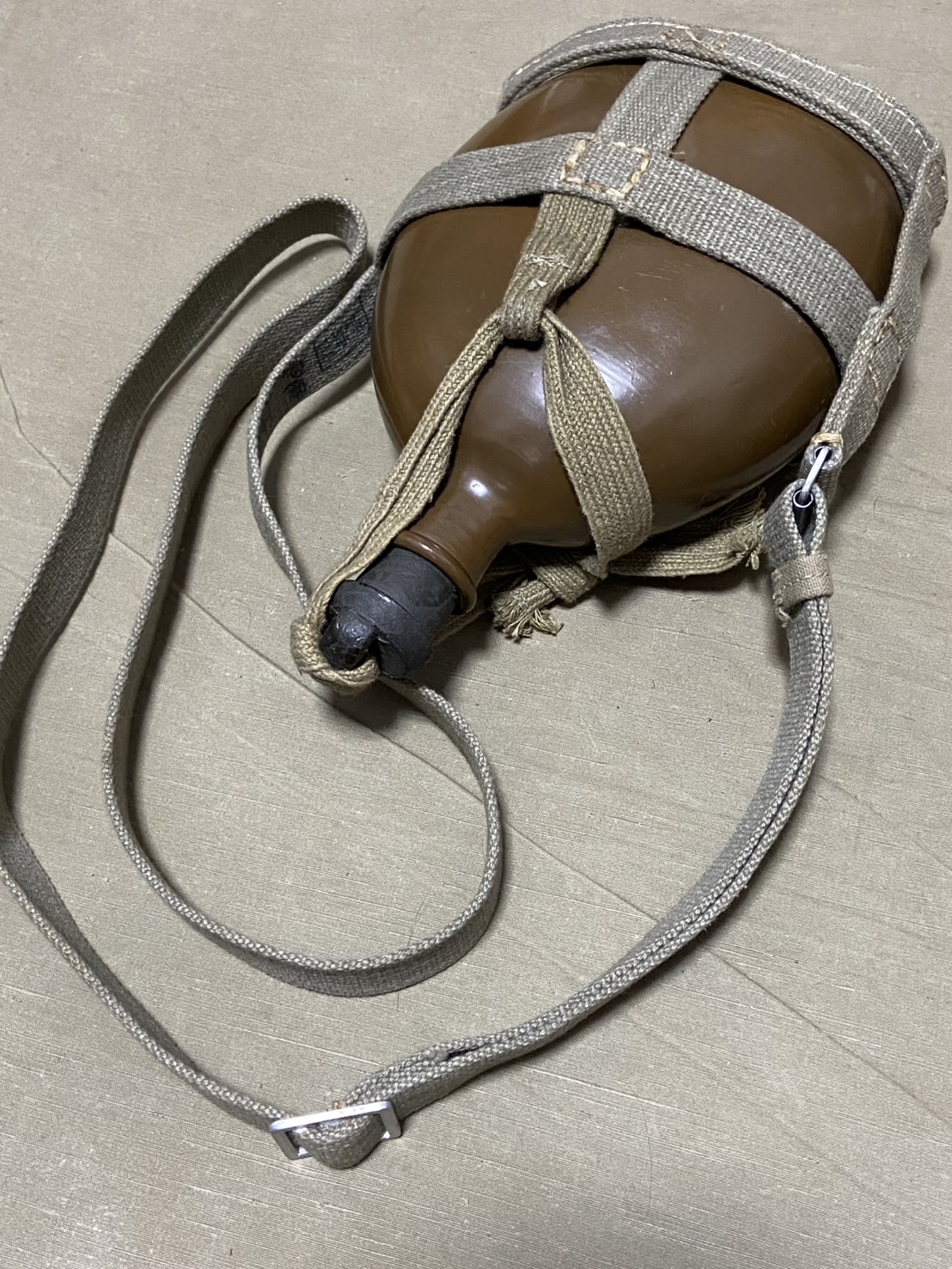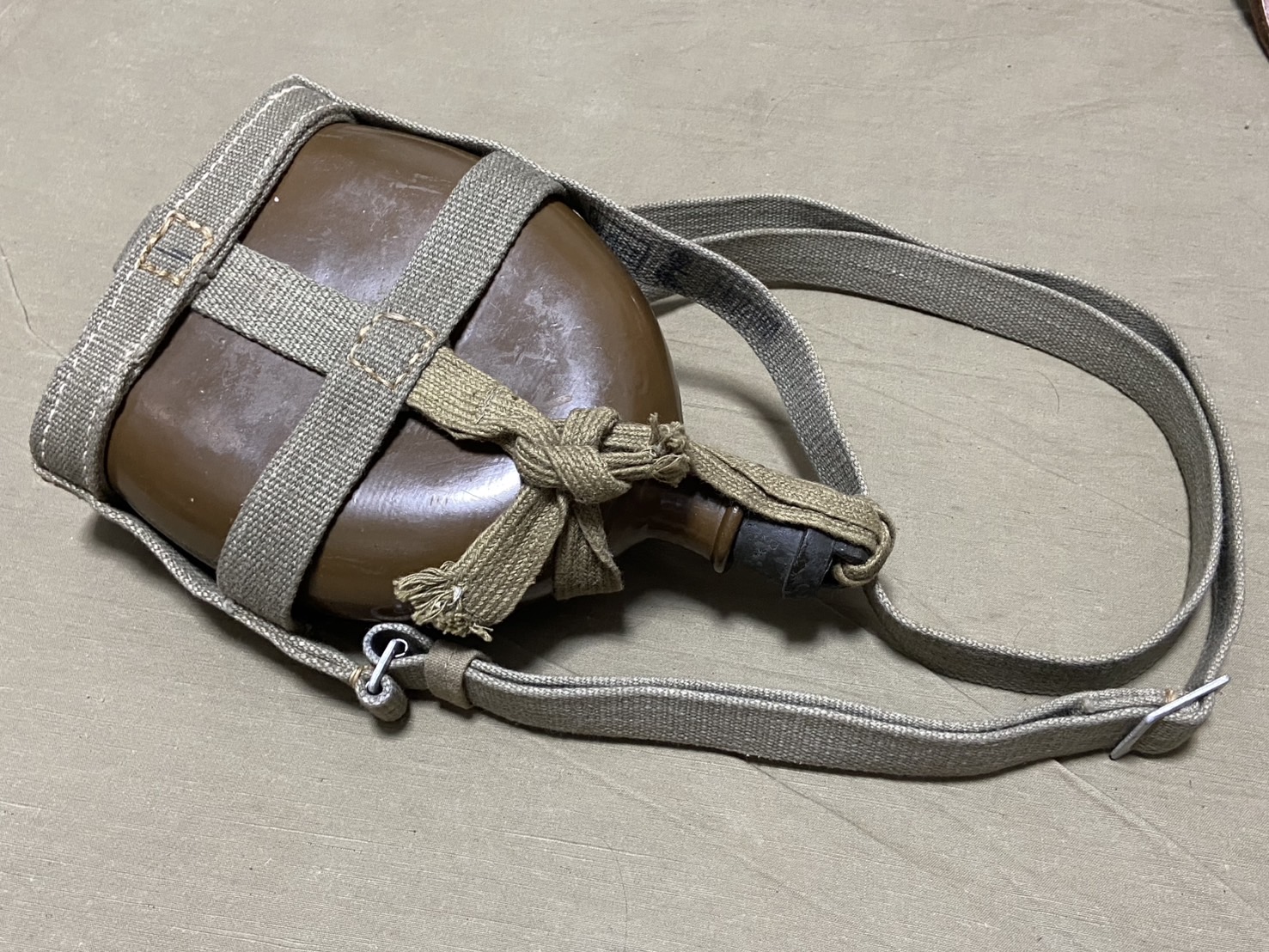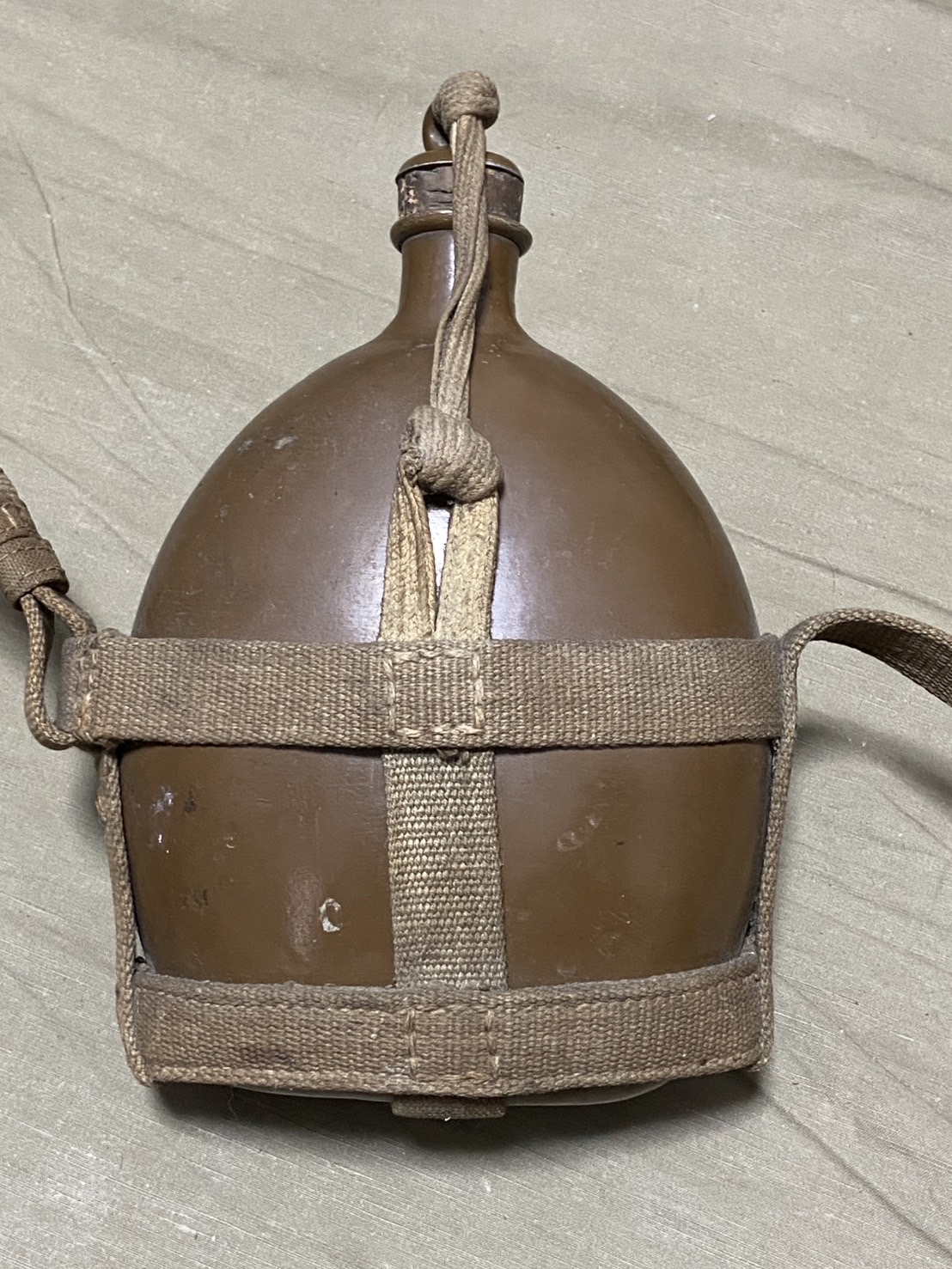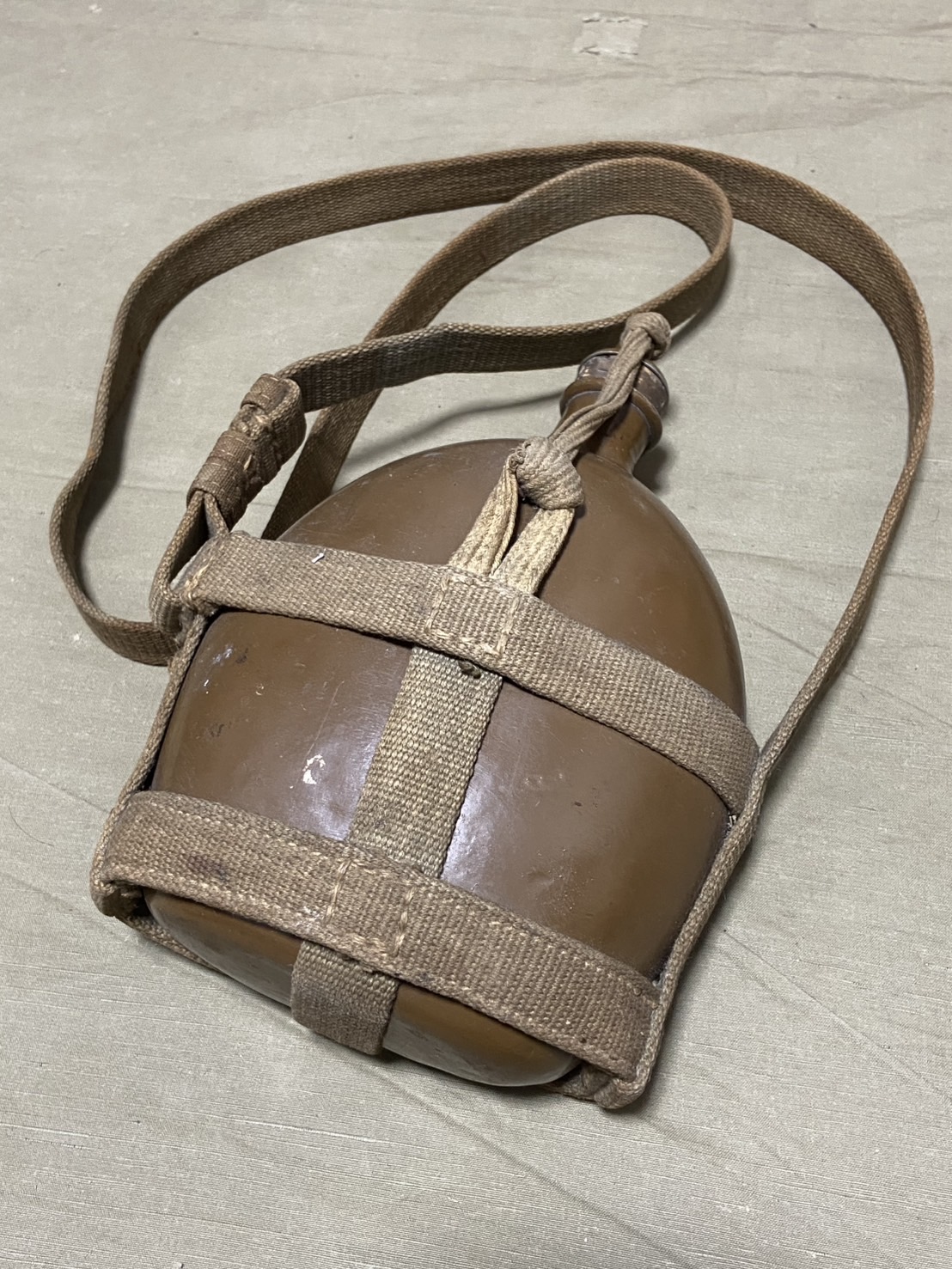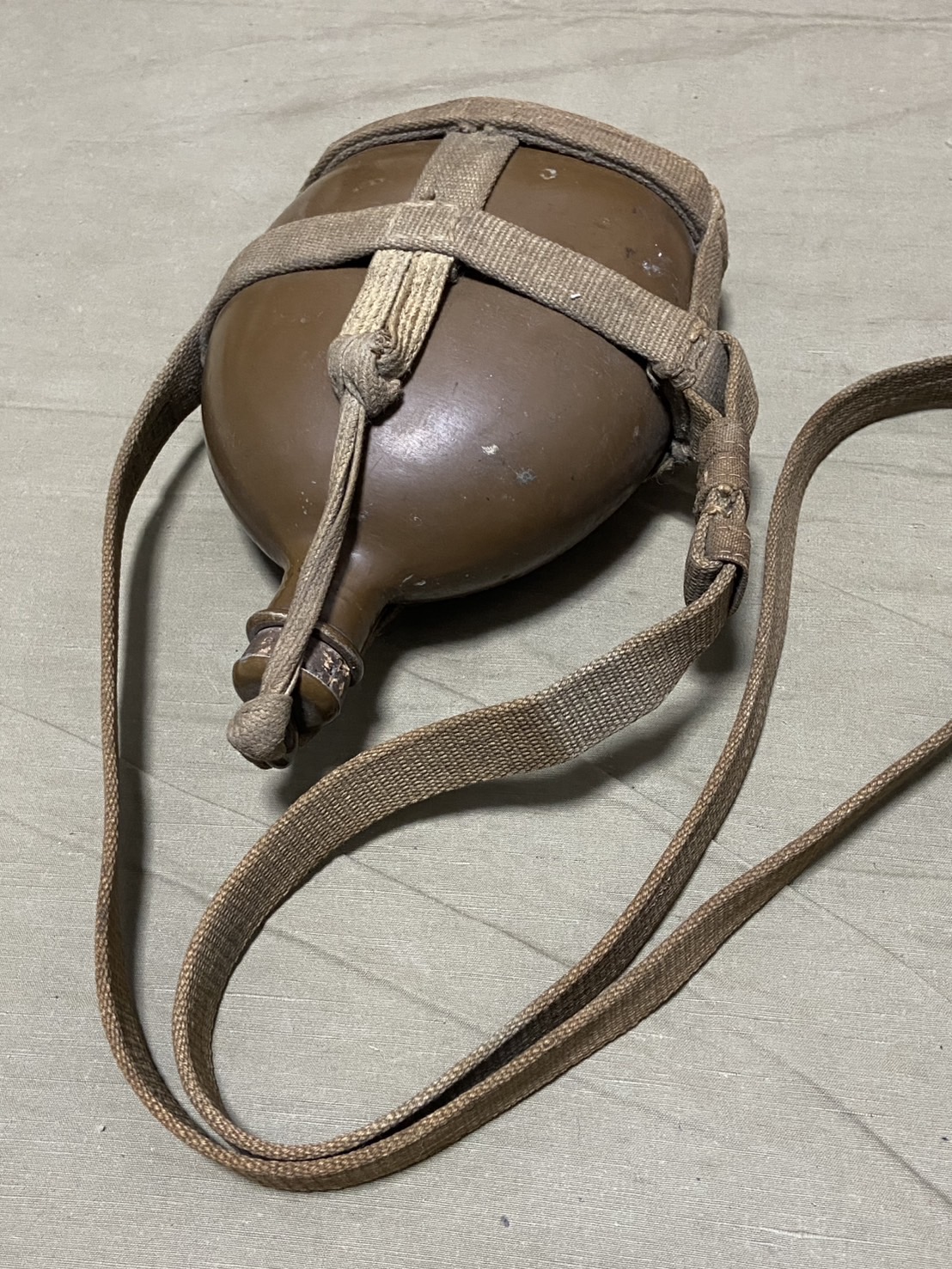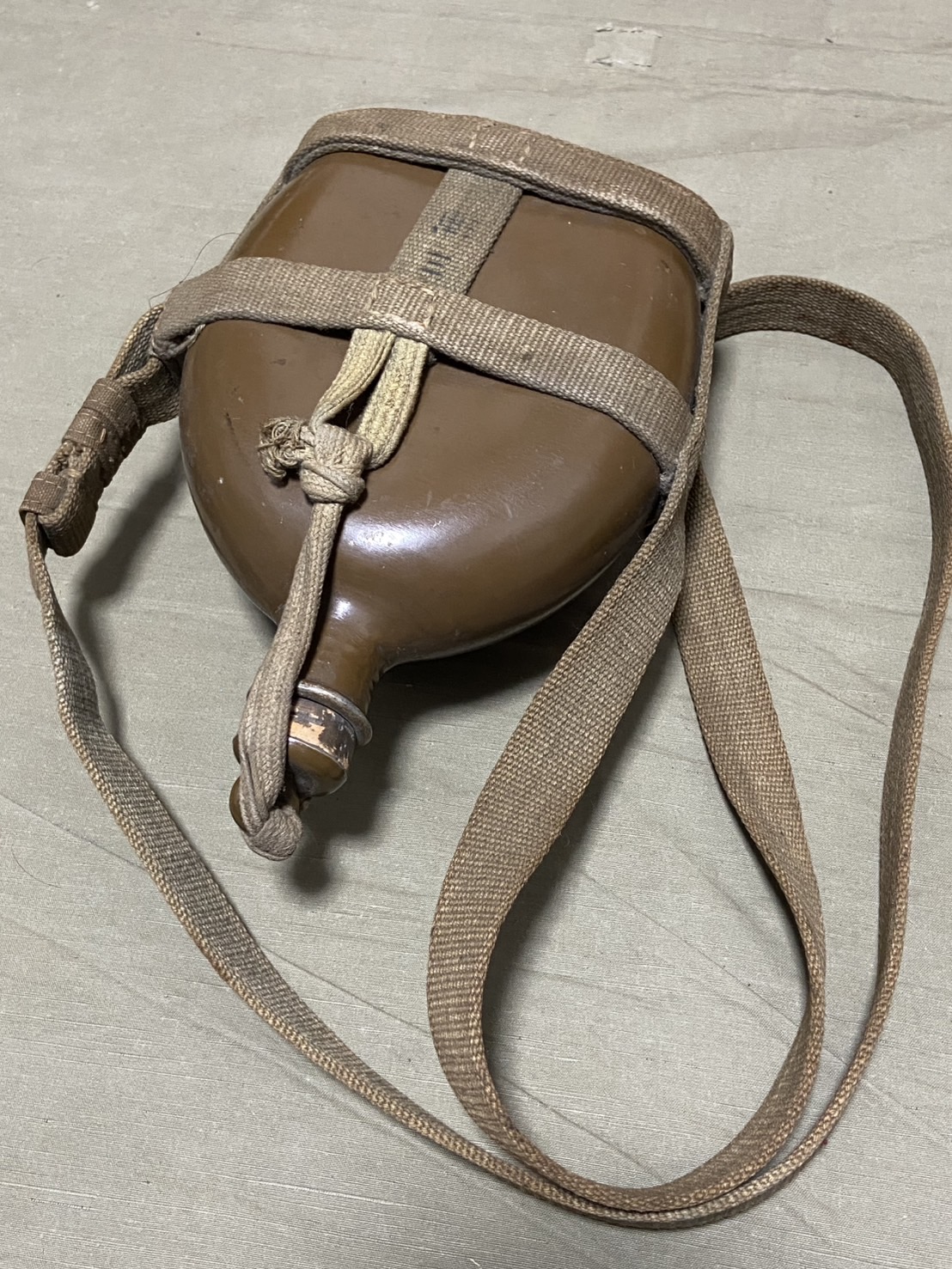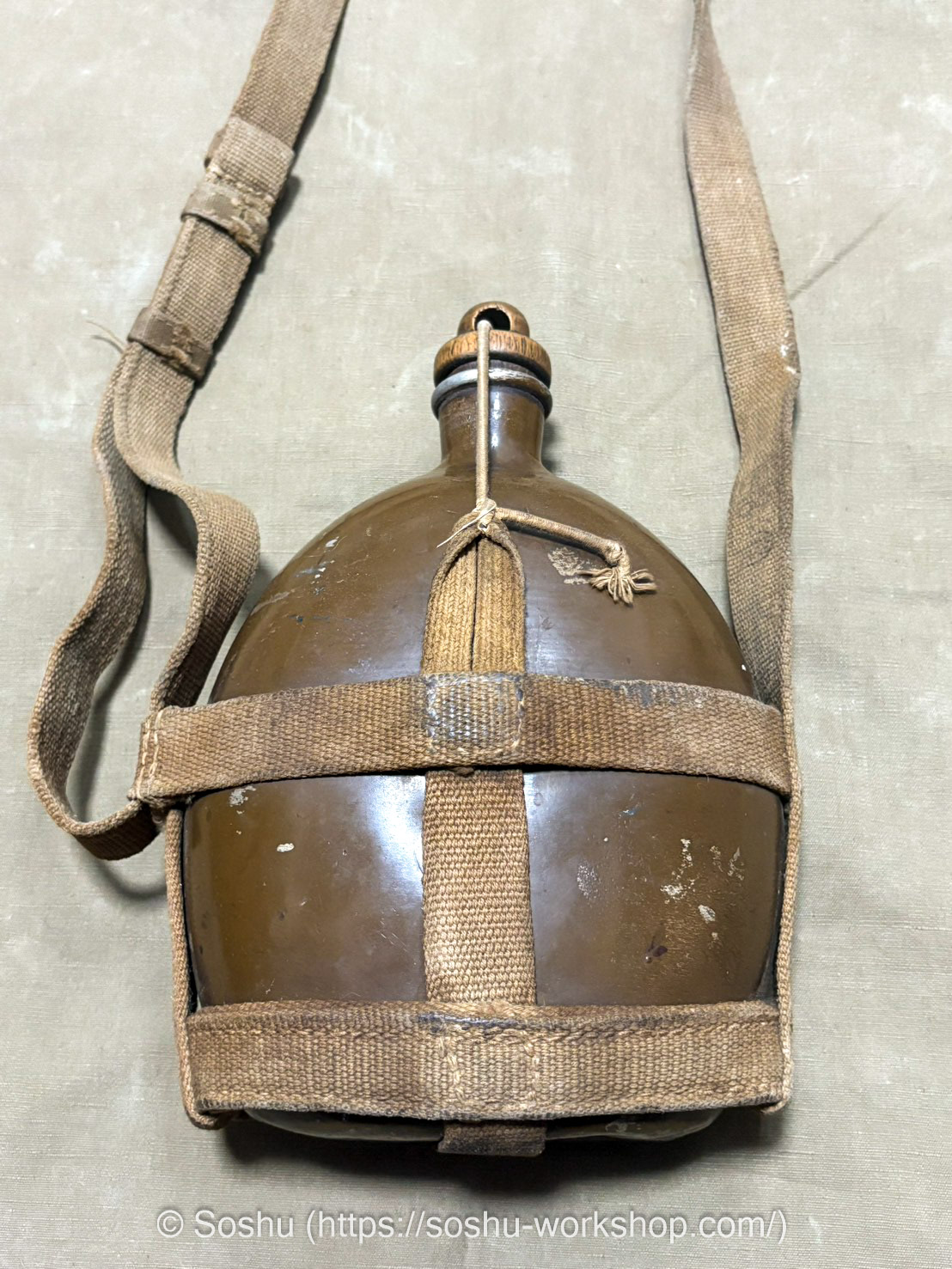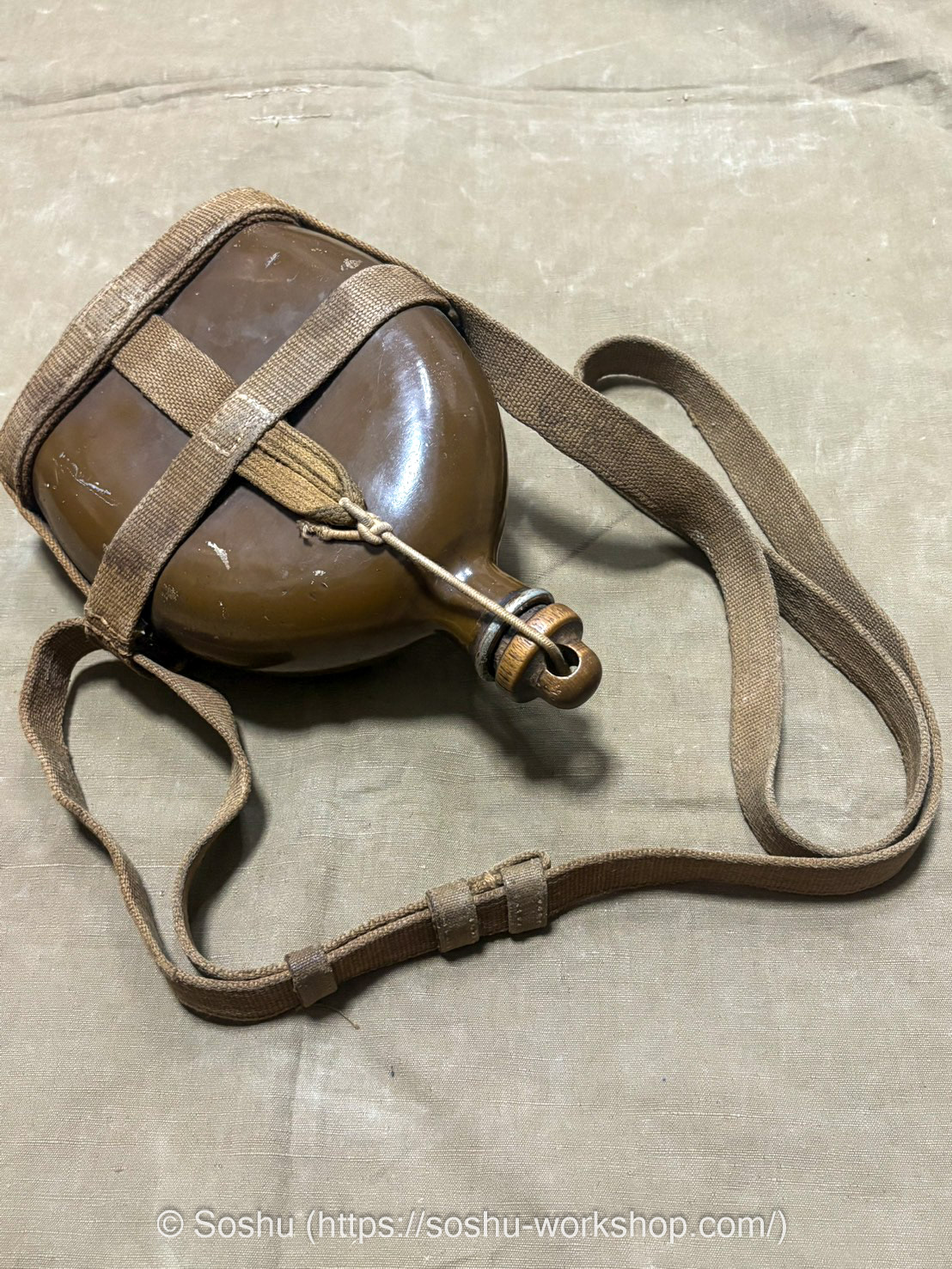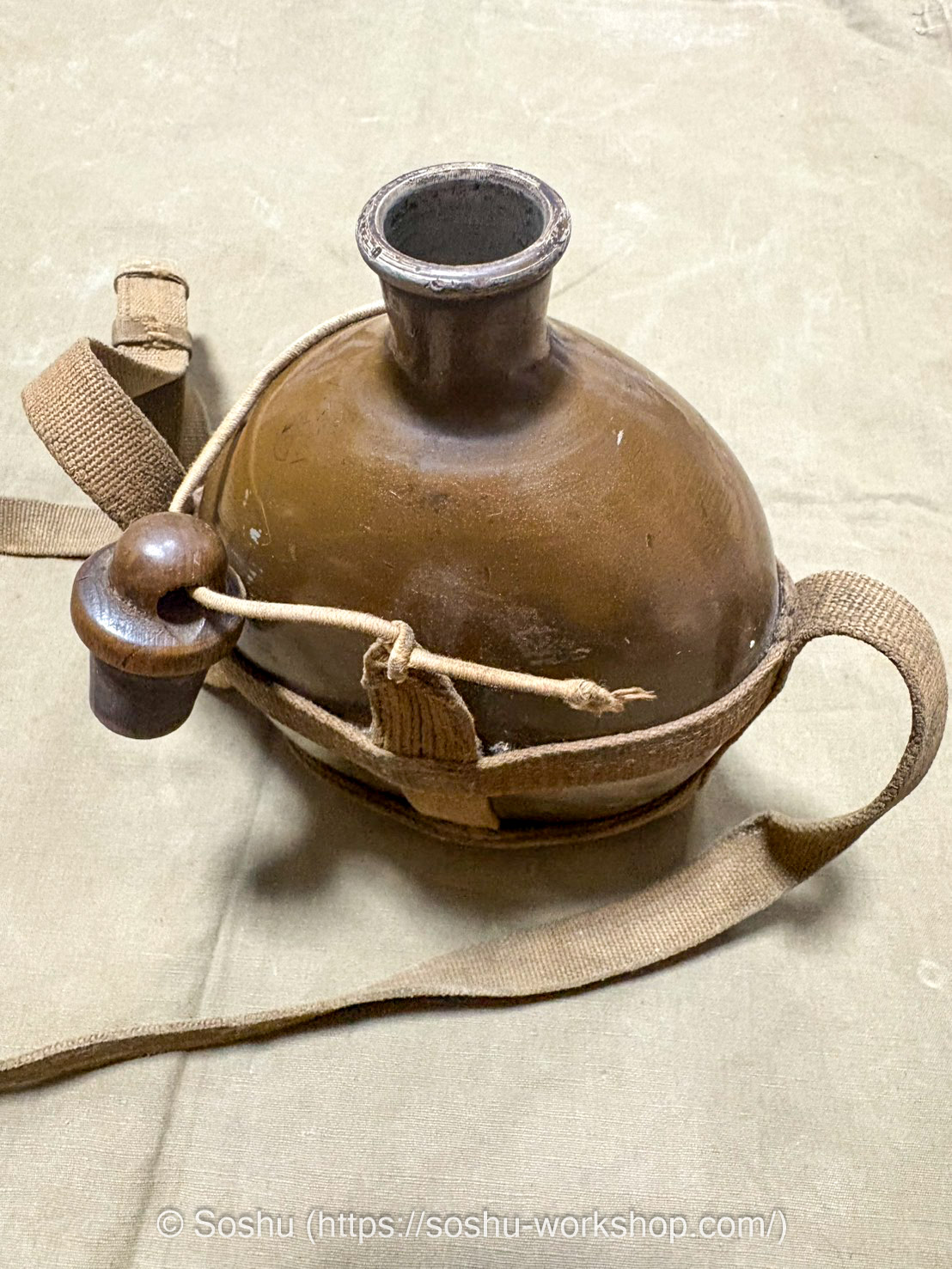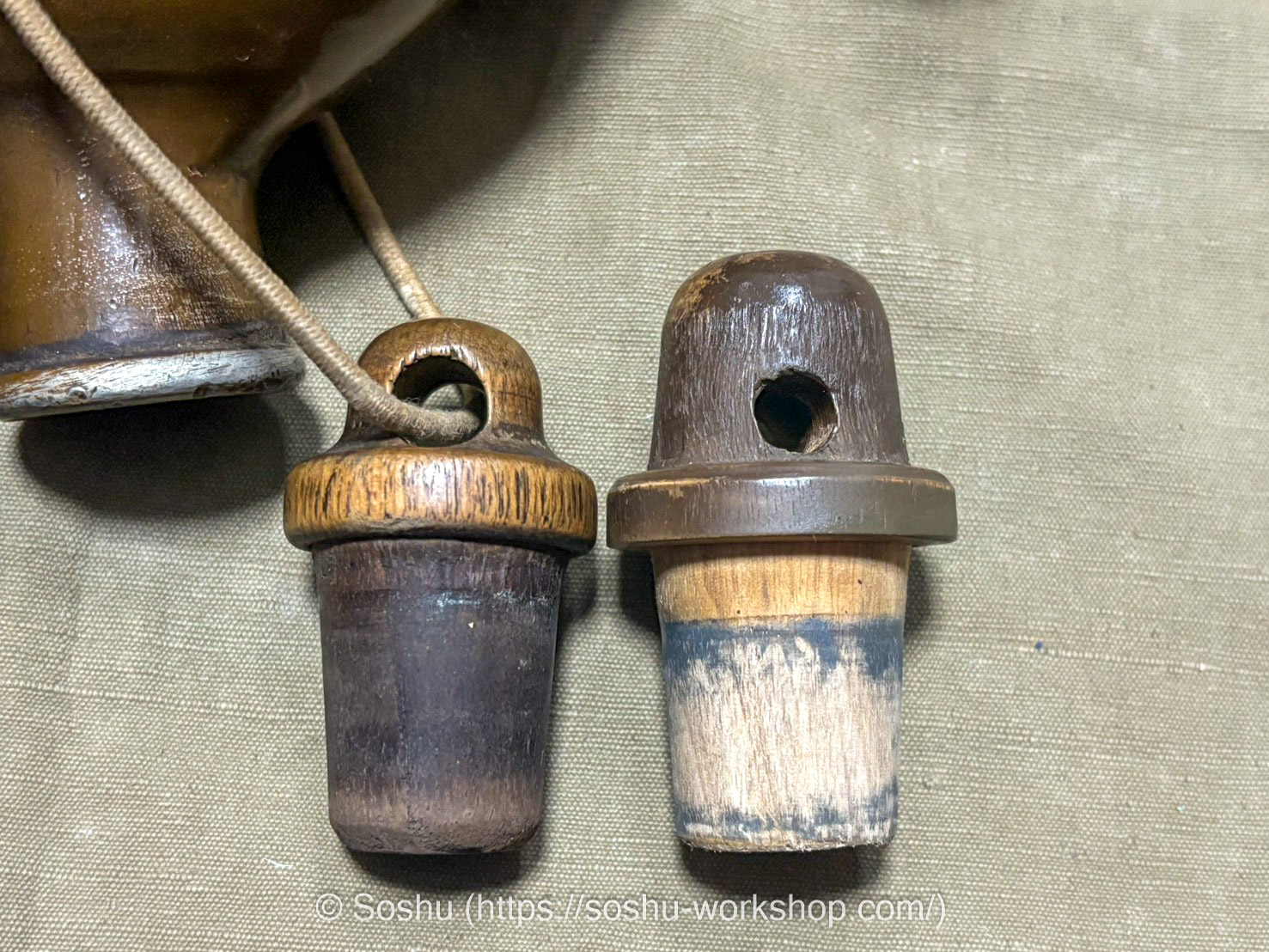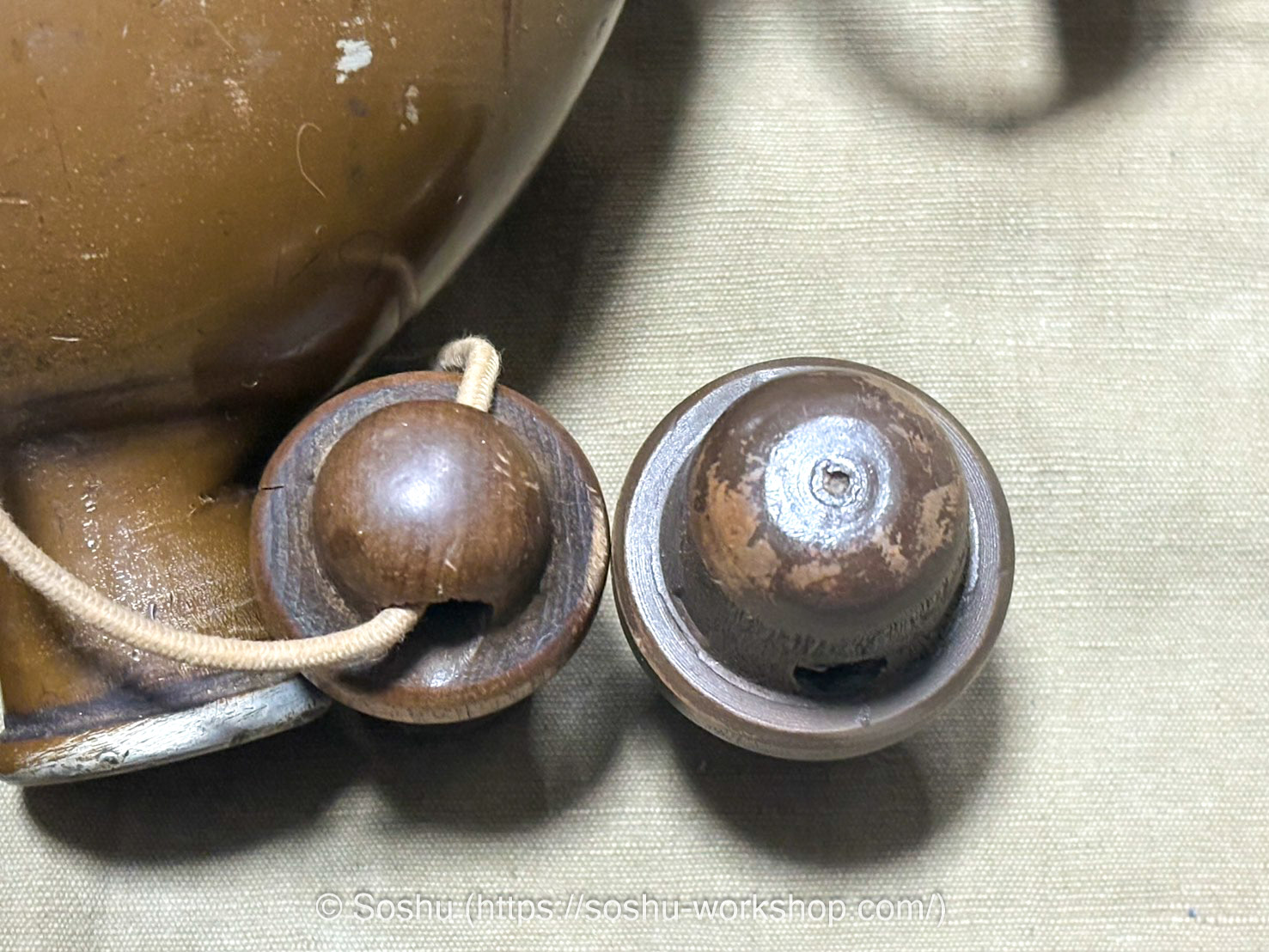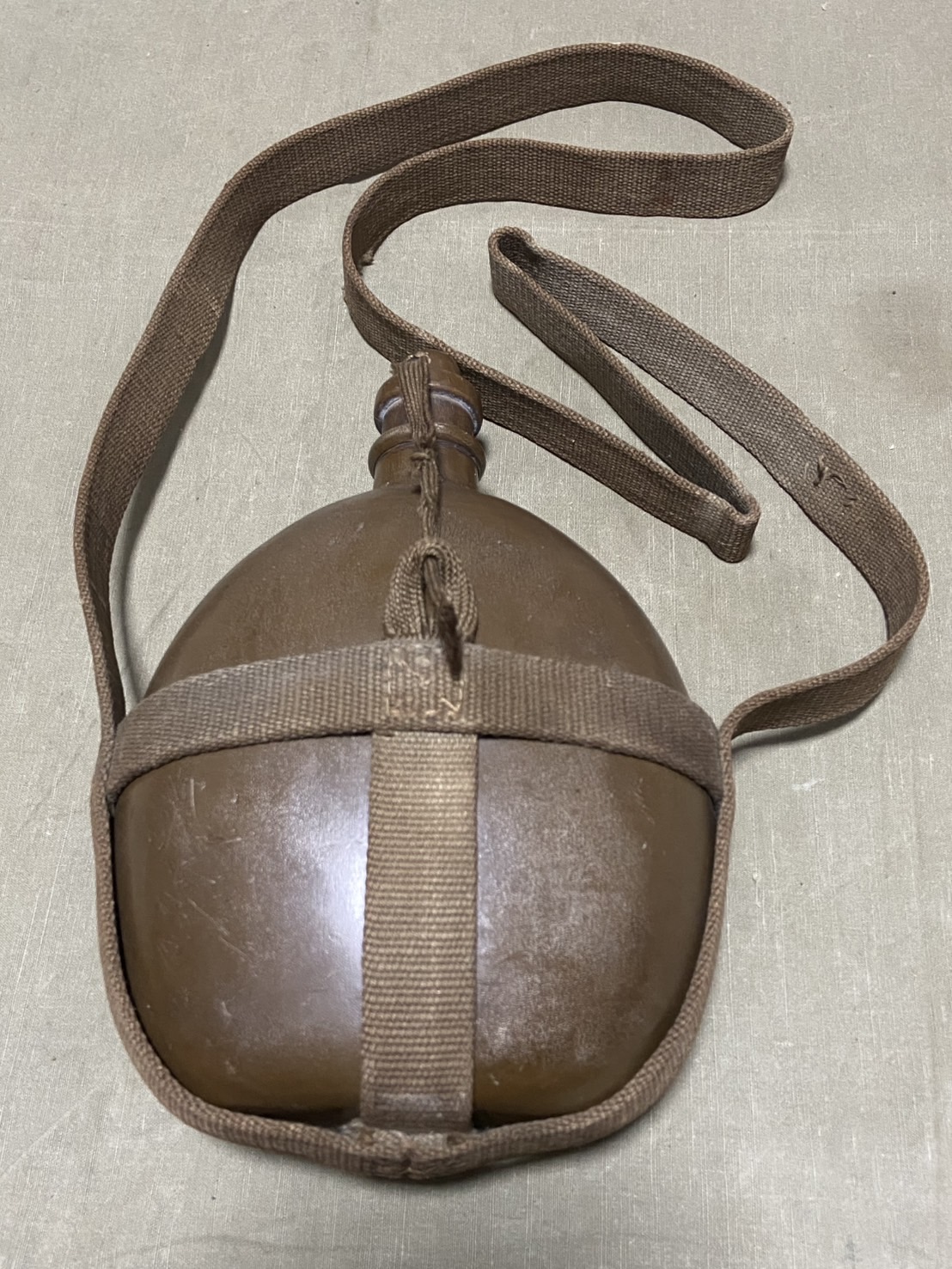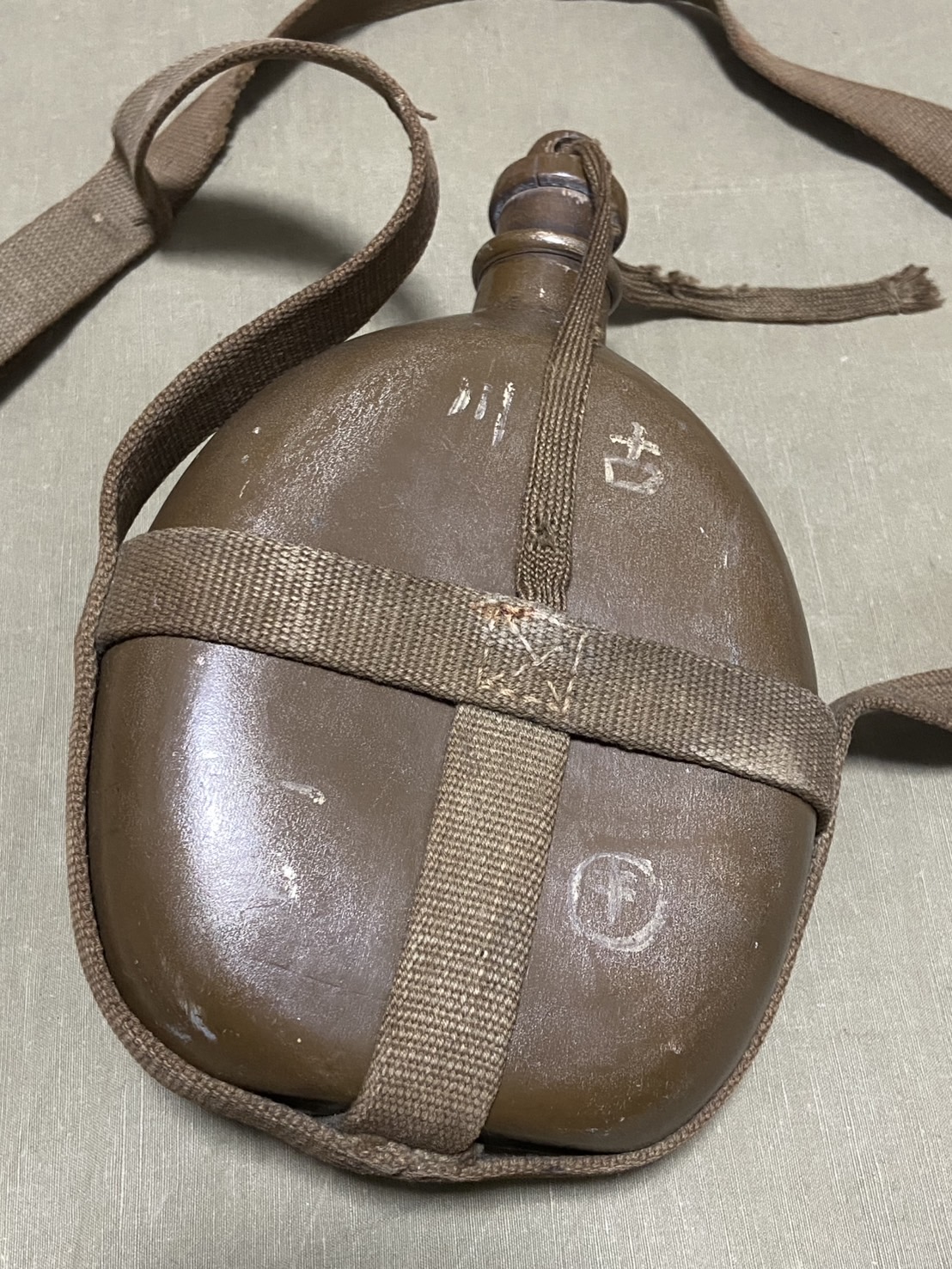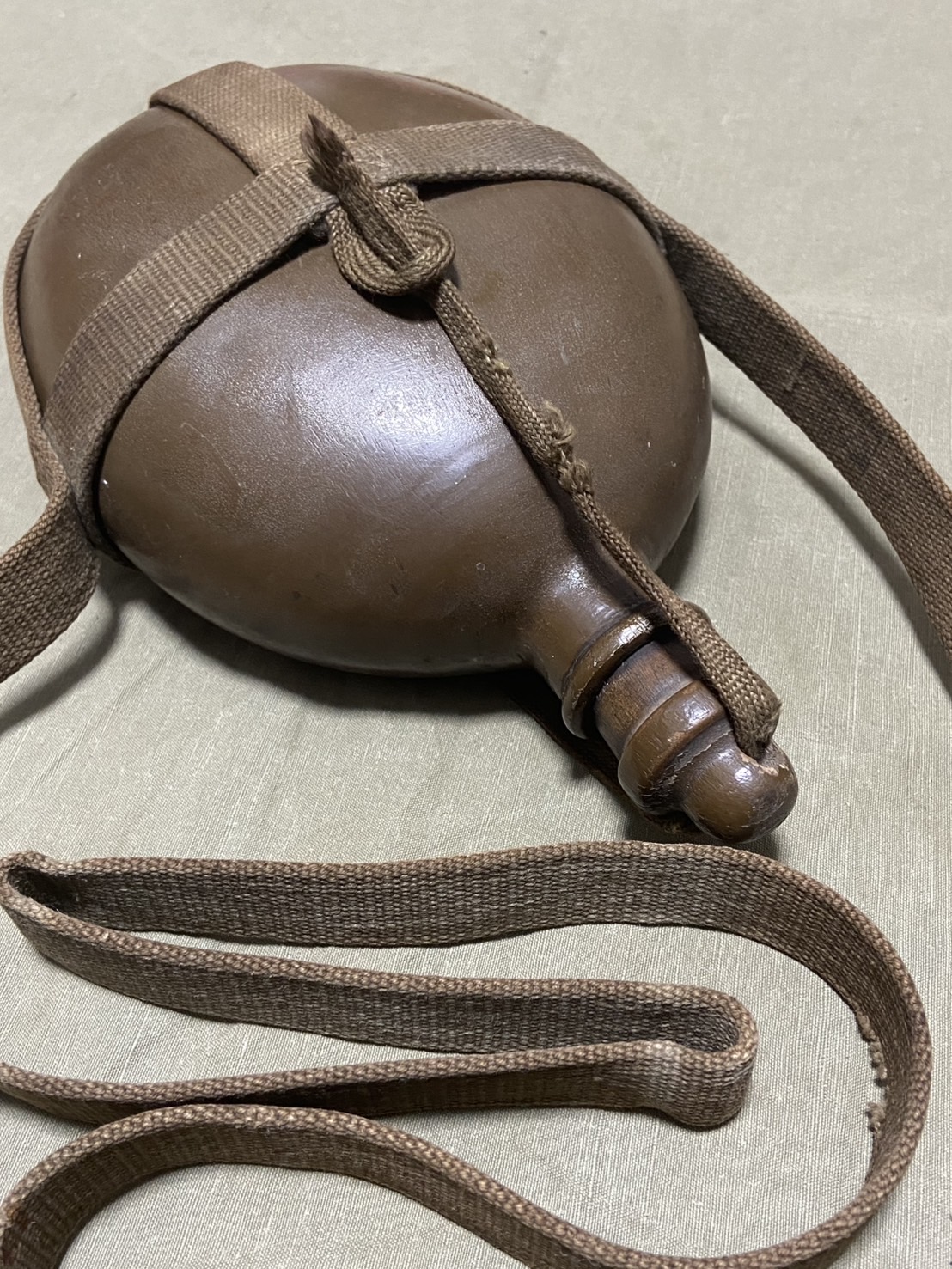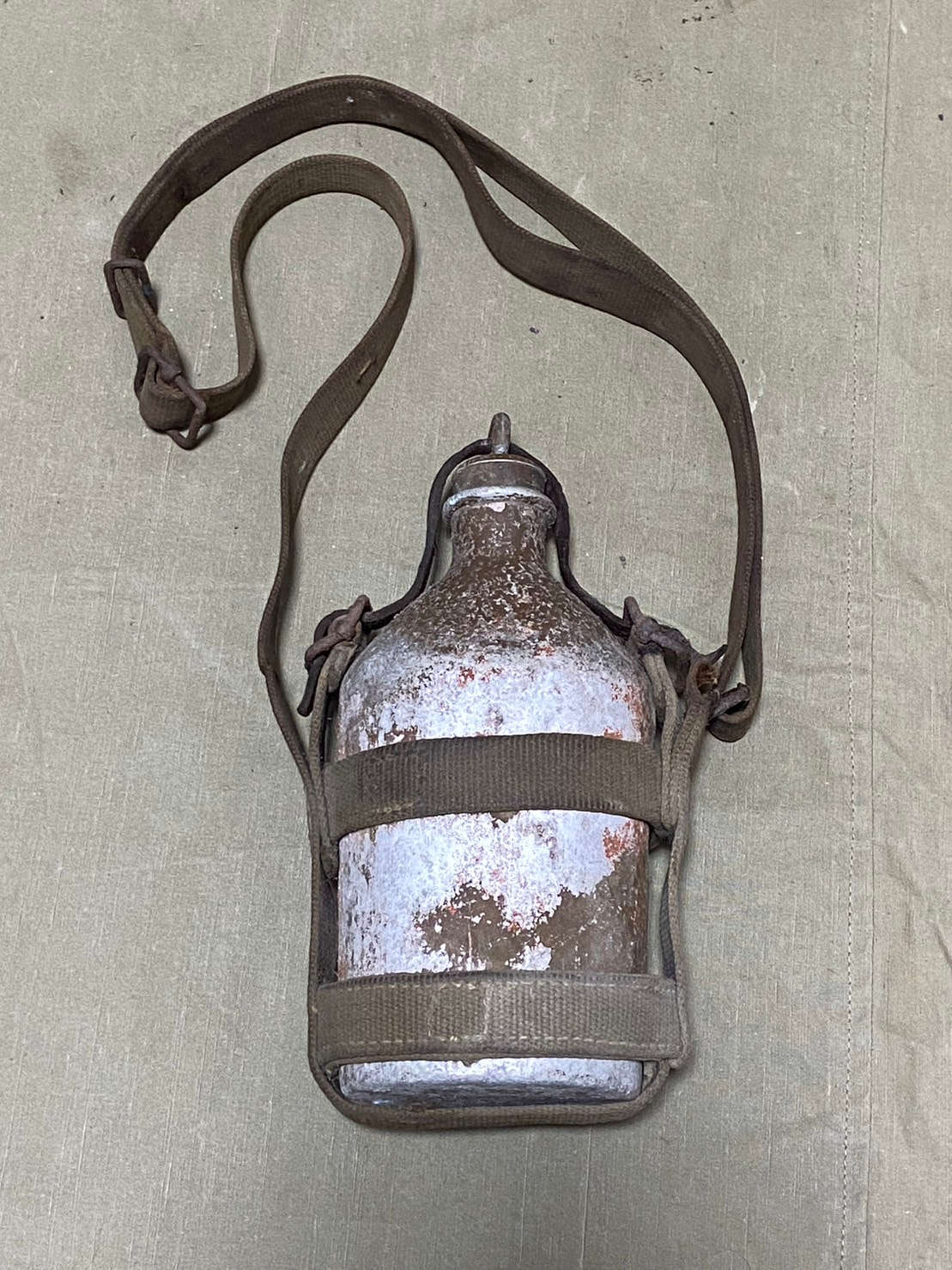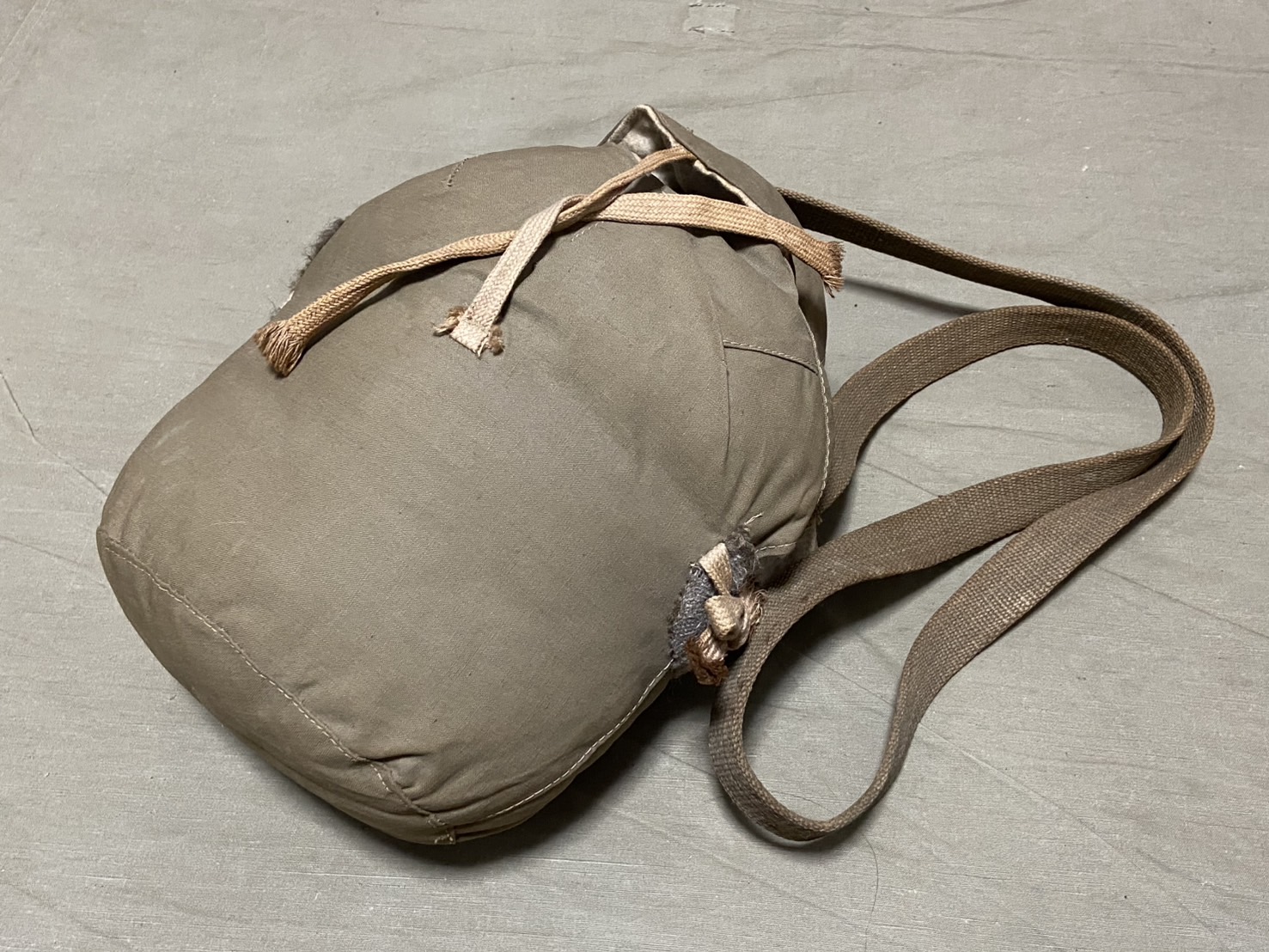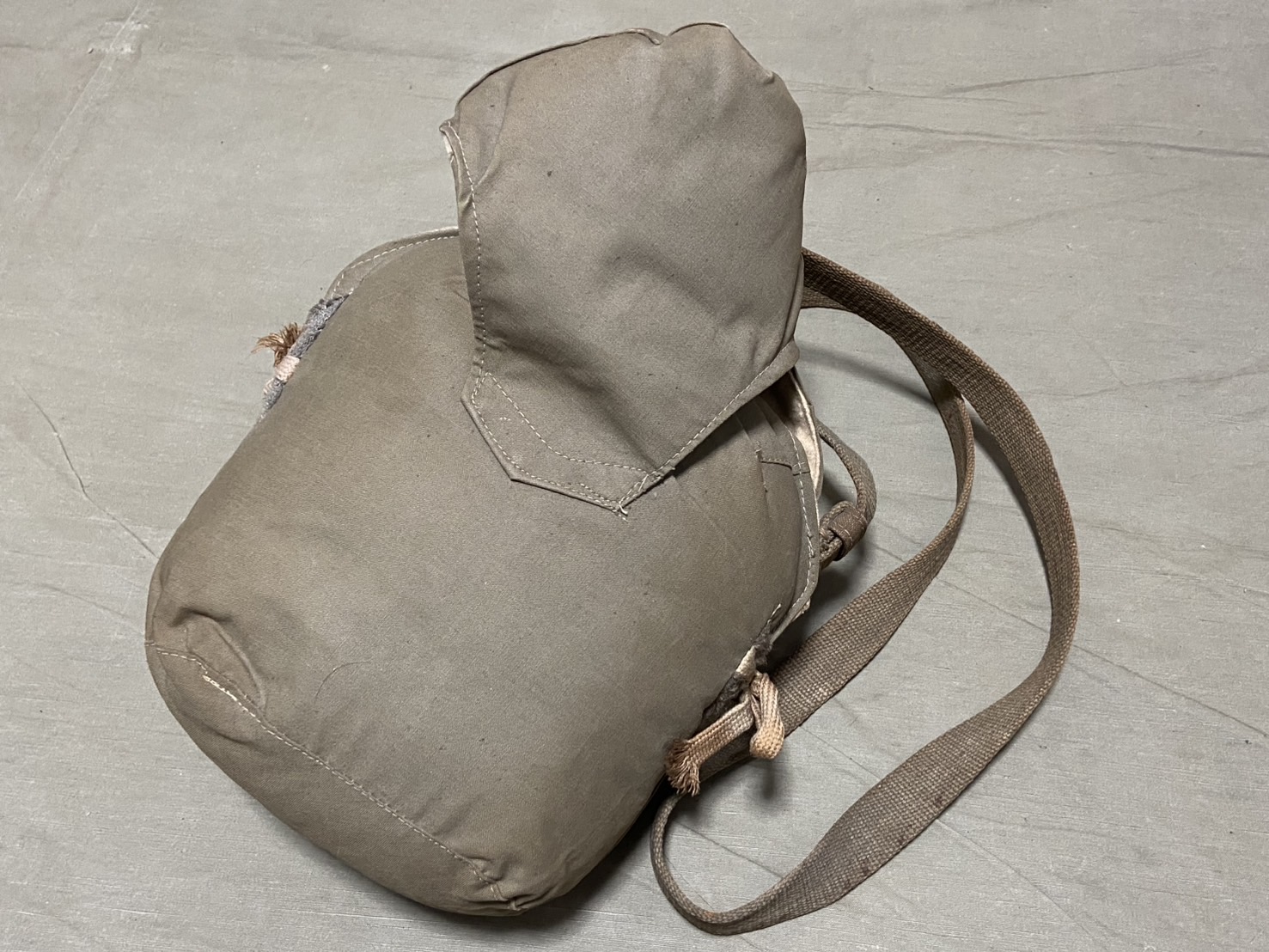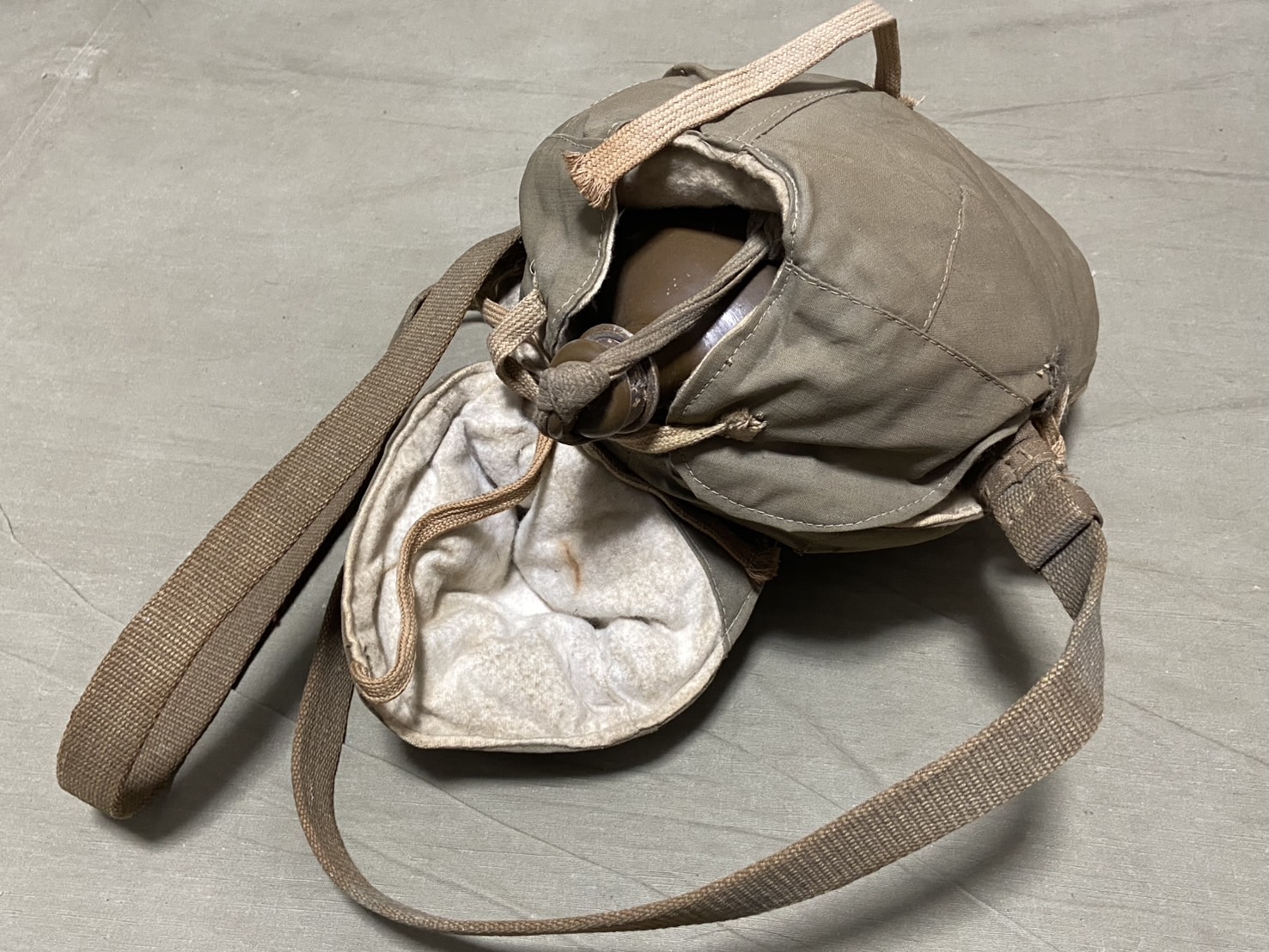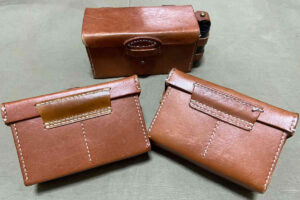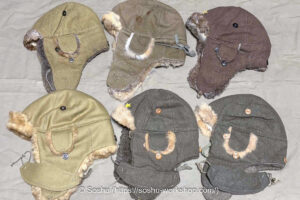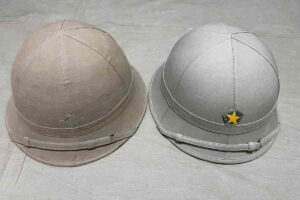The Type 5 Canteen was used by non-commissioned officers and soldiers of the Imperial Japanese Army. Contemporary primary sources refer to it as the “New Model Canteen.” While the older tokkuri-shaped canteen had a capacity of 0.6 liters, the Type 5 Canteen was designed to hold 1 liter.
There are three variants of the Type 5 Canteen, distinguished by the type of strap used: the I-gō (伊号), Ro-gō (ロ号), and Ha-gō (波号). These differences are defined in the Army Clothing Specifications Collection12. In simple terms, the distinctions can be summarized as follows:
- I-gō
- The stopper is secured from the left and right sides using a leather stopper-retaining cord.
- Ro-gō
- The stopper is secured from the front and back using the stopper-retaining cord.
- The strap length is adjusted with a metal buckle and loop.
- Ha-gō
- The stopper is secured from the front and back using the stopper-retaining cord.
- The strap length is adjusted with an auxiliary loop cord.
The minor specification changes in the Type 5 Canteen are believed to have been influenced by resource conservation efforts and material shortages. It is likely that such small differences were not meticulously distinguished in the field.
In this article, I would like to introduce the detailed transitions of the Type 5 Canteen while showcasing several canteens from my collection.
I-gō
The I-gō variant represents the earliest version adopted when the Type 5 Canteen was first standardized. Including the detail of Type 5 Canteen, the Clothing and Equipment called Type 5 can be found in the “Regulations on the Standardization of Clothing and Equipment”3 issued in Shōwa 5. This document contains numerous illustrations, making it an interesting historical source to browse through.
In its original specification, the stopper was secured with a leather cord, and the strap featured an iron buckle. The stopper itself came in both wooden and cork variations.
Below is a replica from HIKISHOP, with the canteen body repainted by me. I painted it before acquiring an authentic one, so the color is slightly off. Regarding the buckle on the strap, the original had a rust-preventive primer-like coating, giving it a more subdued, matte finish. In contrast, HIKISHOP’s buckle appears to have a slightly stronger reddish tint.
Below is an authentic strap for the Type 5 Canteen. It is actually quite intricately made, and as shown in the first photo, the width of each strap varies slightly. In contrast, the HIKISHOP strap is made entirely of 25mm-wide webbing, which means the buckles are actually larger than those on the original.
For canteens in poor condition, the buckles’ rust can corrode the strap to the point of breaking. Because of this, early-model straps in good condition are quite rare. My strap has some areas where corrosion has progressed, but there are still parts where the original primer remains.
If left as is, the strap itself may eventually deteriorate due to corrosion. Therefore, I am considering completely disassembling it to remove the rust from the buckles and reproducing the parts that have already been damaged.
Below is a comparison of canteen bodies. The first image shows the HIKISHOP replica, while the second image features an authentic one. In the third image, I have lined up multiple authentic canteens for comparison. When viewed side by side, you can see that each has slight variations in shape, indicating that there were multiple variations of the authentic Type 5 Canteen bodies.
Incidentally, the HIKISHOP canteen has a dent in the middle from being shot with an airsoft gun. Since they dent easily when hit, I highly recommend using a replica for airsoft games.
Ro-gō
Next is the Ro-gō variant. In this version, the leather stopper-retaining cord was eliminated, and the stopper is secured using a cotton stopper-retaining cord instead.
According to historical records, this revision was implemented on November 2, Shōwa 164. The document states that the cotton flat cord replaced the leather stopper cord and that the buckle and small rectangular loop can be omitted. When compared with the Army Clothing Specifications Collection, it appears that this revision is what formally defined the Ro-gō and Ha-gō variants.
The authentic example shown below has a rubber stopper, but I have also seen simplified versions of the strap paired with wooden or cork stoppers. This suggests that the stoppers were likely used based on available stock at the time.
Additionally, the buckle on the strap was changed to aluminum. A minor detail worth noting is that the strap width was standardized to 21mm across all sections.
Ha-gō
This is the Ha-gō type. Like the Ro-gō, the stopper is secured with a cord, but the metal buckle and loops have been removed.
The way the neck cord is tied differs between the Ro-gō and Ha-gō, but since no primary source defining the tying method has been found, it was likely tied according to the user’s preference. I have preserved both examples exactly as I acquired them and have not altered the knots.
Here is another Ha-gō type canteen. The stopper is made of wood and is secured with a rubber cord. Judging by the wear, the rubber cord does not appear to have been installed recently, but it’s questionable whether this type of cord was actually used at the time. The condition of the canteen strap itself is very good.
Since I have the opportunity, I compared the wooden stopper with a HIKISHOP replica. There seem to be differences in the size of the hole and the diameter of the head. However, it’s very likely that actual stoppers had multiple variations, so we cannot conclude that HIKISHOP’s version is inaccurate based on this alone.
That said, if the hole is too small, it can be difficult to thread the closure strap through, so widening the hole might be necessary. For reference, the hole in the authentic stopper has a diameter of exactly 1 cm.
Final Model
This version shows further streamlining, with a simplified suspension cord. The cord is arranged in a cross pattern around the canteen body, reducing the amount of material required. It also has no length-adjustment mechanism.
The material quality is inferior compared to earlier versions, and the cord used to secure the stopper appears to have broken off—it’s now quite short. The name “Furukawa” is written on the canteen body.
When searching for a Type 5 Canteen on Amazon or Rakuten, you’ll often come across replicas of this version. However, the straps and buckles on these replicas have a modern appearance, which feels somewhat off.
Since this late model was used in limited situations, it may not be the best choice for general use. If you’re looking to purchase a replica, I recommend those from HIKISHOP or S&Graf.
Reissued Canteen
This is the canteen that my grandfather used. He was drafted around 1945 at the age of 19 and was still in training on the Japanese mainland when the war ended.
At first glance, this canteen resembles the older tokkuri-style model, but upon closer inspection, its shape is slightly different. It may have been a repurposed civilian canteen or something similar.
The strap was originally from I-gō but was modified. If you look closely, you can see traces of stitching in a rectangular shape, indicating where it was altered. In the final stages of the war, non-standard equipment like this seems to have been used as well.
Cold Weather Canteen Cover
Since we’re on the topic of canteens, I’d also like to introduce theCold Weather Canteen Cover. Incidentally, the Ha-gō canteen I mentioned earlier was inside this cover when I acquired it.
The interior of some Cold Weather Canteen Covers is lined with fur, but mine is made of silk floss. While there are some age-related stains, it is in good condition with no tears or major damage.
For the Cold Weather Canteen Cover, I have summarized it in a separate article, so please refer to that as well.
Summary
That concludes my general classification of the Type 5 Canteen. I didn’t set out to collect them intentionally, but before I knew it, I had gathered the full range—so I decided to introduce them here.
Recently, well-preserved canteens have been increasing in price, with some exceeding 5,000 yen on Yahoo! Auctions. However, canteen bodies or straps alone can sometimes be found at lower prices, making them good targets for collectors. While unused, mint-condition items are ideal for a collection, if you plan to wear one for photography, a well-worn, battered canteen can add more authenticity to the look.
Since airsoft guns can easily dent these canteens, I highly recommend using replicas for survival games. If you’re not too concerned about minor details, the replicas from HIKISHOP and S&Graf are more than sufficient for gameplay.
That said, the leather stopper cord on these replicas is made of thin synthetic leather, so I recommend replacing it. For an easy detail upgrade, you can buy 2–3mm thick leather scraps, use the replica’s stopper cord as a template, and make your own.
Actually, the replica’s stopper cord shape is a bit off… which brings me to a quick sales pitch—I’ve listed accurate reproduction stopper cords on Yahoo! Auctions. I took measurements from an authentic example, ensuring the correct thickness and hole shapes, but they didn’t sell as well as I expected, so I haven’t made too many. If they’re not listed, feel free to request one via X, and I’ll restock them as needed.
Footnote
- “Army Clothing Specifications Collection, Volume 1 / Part 1: Finished Uniforms / Section 9: Equipment for Non-Commissioned Officers and Below,“ JACAR (Japan Center for Asian Historical Records) Ref. C14010247800, Army Clothing Specifications Supplement, Shōwa 17.8–12 (National Institute for Defense Studies, Ministry of Defense) ↩︎
- “Army Clothing Specifications Collection (2nd Supplement), Vol. 1 / Part 1: Finished Uniforms / Section 9: Equipment for Non-Commissioned Officers and Below,“ JACAR (Japan Center for Asian Historical Records) Ref. C14010286500, Army Clothing Specifications Collection Supplement (2nd Edition), Shōwa 18.1–4 (National Institute for Defense Studies, Ministry of Defense) ↩︎
- “Regulations on the Standardization of Clothing and Equipment“ JACAR (Japan Center for Asian Historical Records) Ref. C01001143600, Permanent Documents, Category A, Class 1, Shōwa 5 (Ministry of Defense, National Institute for Defense Studies) ↩︎
- “Revision of Army Directive No. 8 of Shōwa 5, Personnel Affairs Section” JACAR (Japan Center for Asian Historical Records) Ref. C08070711200, Shōwa 16 Army Directives Compilation, Archives Section (Ministry of Defense, National Institute for Defense Studies) ↩︎
